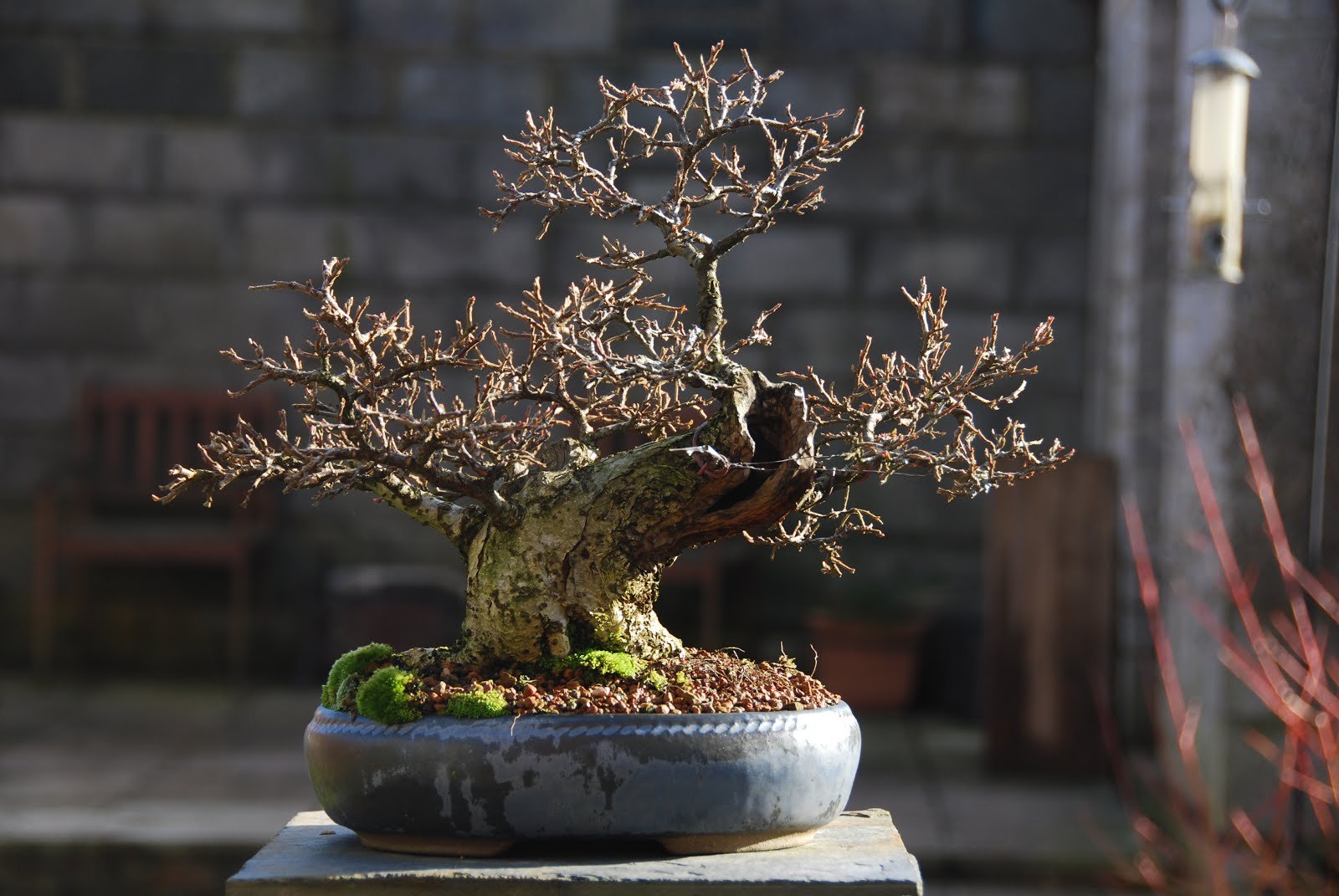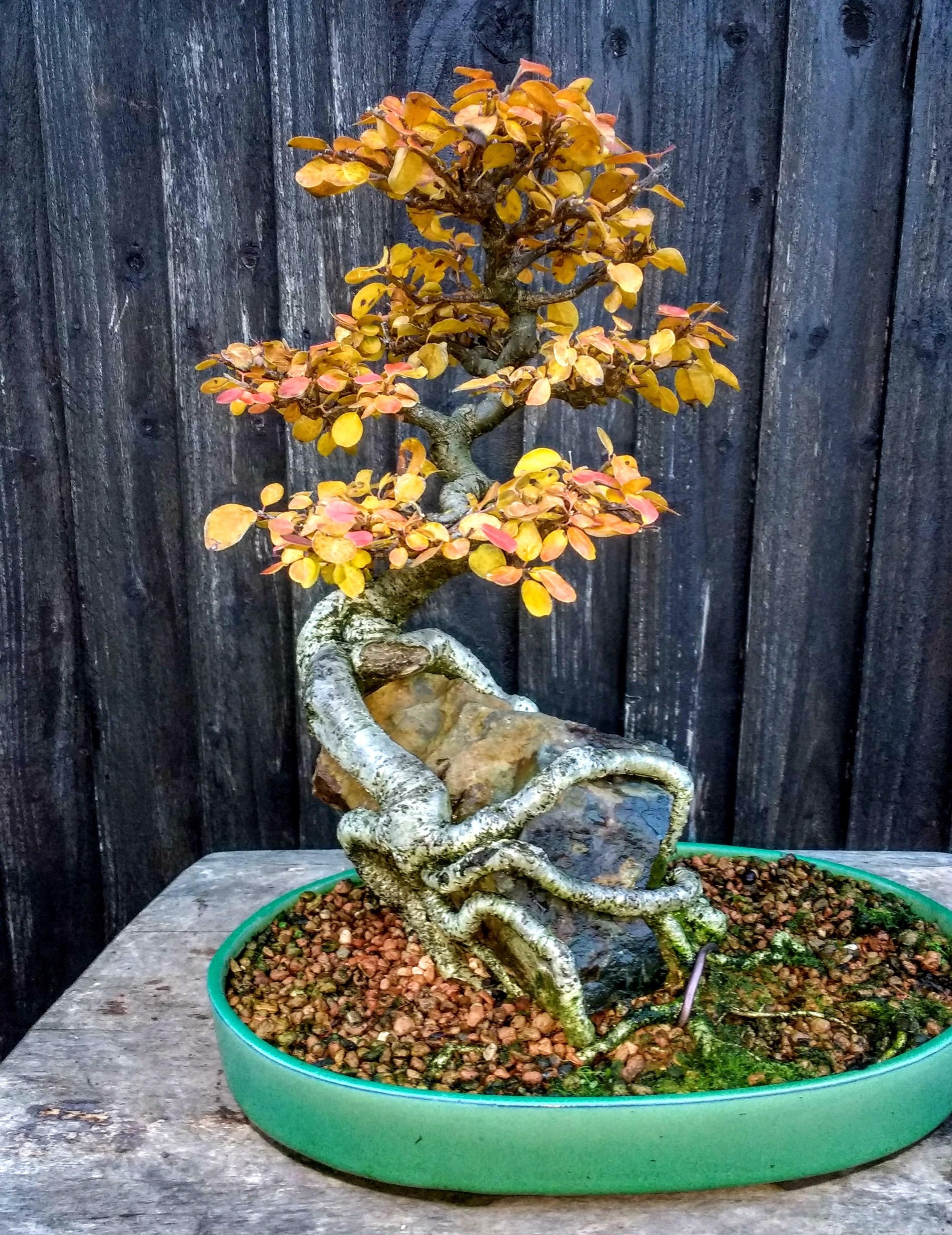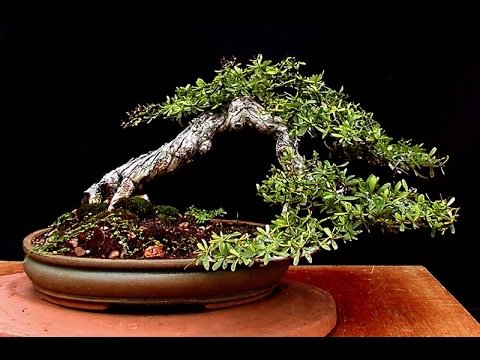🔵 Cotoneaster, #2402
SBBK Guidance July 2024 (JT)
As potted, the trunk emerges straight vertical and does not seem natural (other than such as a redwood).
Suggest raising to an angle and rotate to see all of that helped, and which orientation may be the front (best view). The section after the first bend is rather straight, but one orientation makes is less straight.
At the top, branches go in all directions and so the eye gets lost. Consider options, such as pruning most of the opposite branches from the cascade. Resulting in a cascade, asymmetric.
Best to prune in this growing season, to encourage healing and rebounding foliage. To prevent scarring from major pruning, trim back progressively or leave some branch foliage above the series of cuts. This will draw sap across the scar and keep the cambium alive.
Trim the apical foliage to not grow so tall, building a pad on top.
Prune the upward branch at the tip of the cascade. Continue the cascading branch lower.
Cotoneaster is a hardwood, which decays faster than soft wood (e.g. juniper or pine). Consider some Jin or branches to remove, but they will not last long/forever.
Cotoneaster, from my mother from her garden—Jan 2024.
July 2024 Cleaned up
The Cotoneaster needs a lot of water in summer, but it can survive short droughts. In winter the roots should be kept only slightly moist. Overwatering can cause root rot. Cotoneasters are not demanding in regard of water quality.
During the growing season feed the tree every week with liquid fertilizer or apply a solid organic fertilizer every four weeks. Use a balanced product with sufficient phosphorous, potassium and micronutrients to promote flowers and fruit.
Cotoneasters take constant pruning very well. Older branches are best pruned in spring. Young shoots are constantly trimmed during the growing season. Cotoneasters can be wired at any time of the year. Younger branches are quite flexible, older ones become quite stiff and can snap when you try to bend them heavily, but in most cases they can be shaped with guy wires.
Young trees can be repotted yearly, in early spring. Older cotoneasters are repotted every two or three years. The roots can be pruned considerably. Use a well-draining standard soil mix.
— Bonsai Empire
Some cotoneaster plants are deciduous, while others are evergreen. This diverse genus of shrubs and small trees can have a variety of habits.
Deciduous cotoneasters can be identified by their leaves falling in the winter, and they often have striking fall colors in shades of red, orange, and purple.
Val M advice:
A former member used to do beautiful work with cotoneaster.
Haven’t seen any with Jin and Shari but seems like you could try.
They are in the rose family so are susceptible to quite a few diseases like fireblight which can cause sudden limb dieback. Deadwood features seem like they might let in disease so something to think about.
All ramification is made by frequent cutting back. This plant tends to put on coarse runners so combating that is a challenge.
Will be fun to see how it goes!














